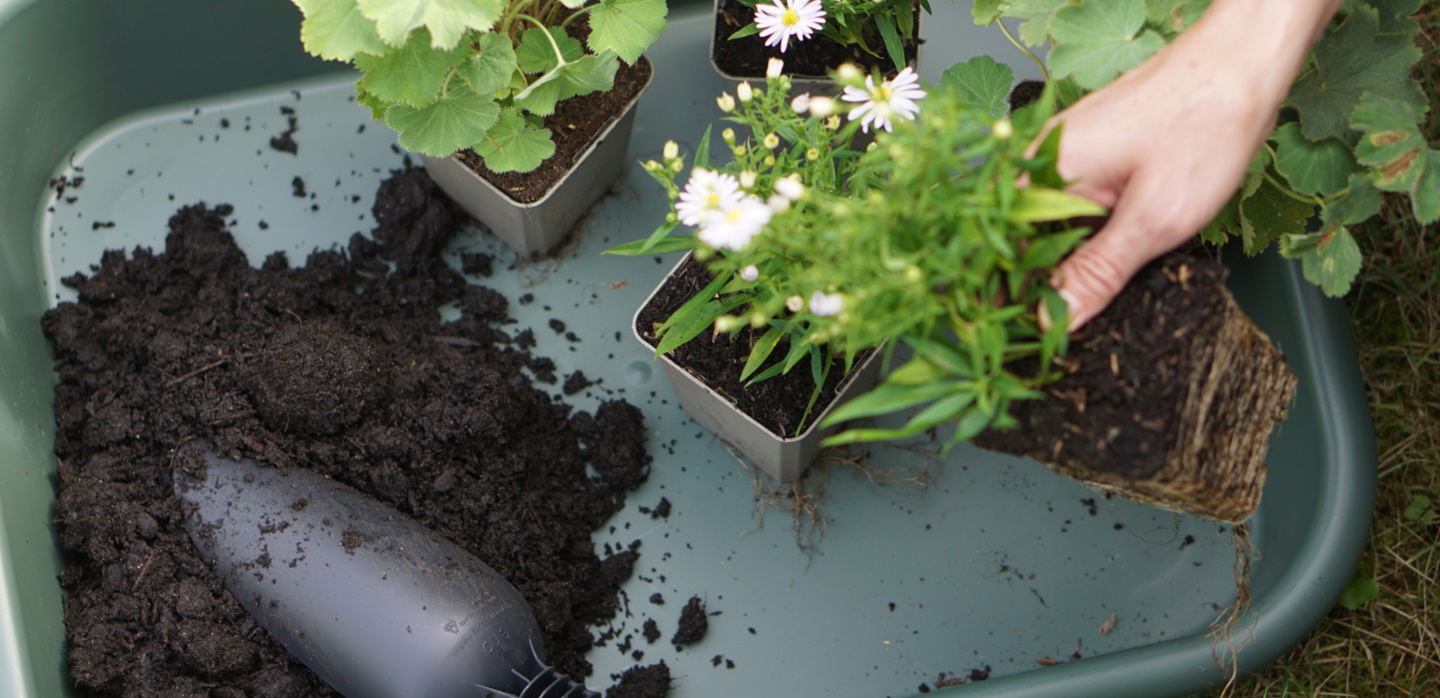
Je tuin vullen en voeden in de herfst
Autumn is the perfect time for making adjustments in your garden. The soil is still warm, allowing plants to establish their roots effectively. In nature, the leaves fall from trees in order to insulate the earth for winter, so a layer of leaves in your garden beds is also essential. In this blog, we provide practical gardening tips for autumn. Get started by dividing and repotting your plants, sowing seeds in seedling trays with a greenhouse, or planting new flower bulbs in pots or the ground.
A blanket for your plants
It won't be long before nature’s colours change to various shades of brown in the fall. Autumn days become noticeably shorter, signalling to nature that it's time to let go of leaves. Chlorophyll production decreases, and the supply of nutrients to the leaves stops. The green colour fades, revealing the yellow-orange hues of nature. Leaves fall like a blanket, covering the roots of trees, shrubs, and plants to protect them from the cold.
Your plants grow faster in autumn
In the fall, the soil is still warm from summer temperatures but not as dry as during the peak summer months. Think of it as a warm bed for your plants. The roots respond by becoming more active. A plant placed in cold soil will remain in a sort of dormancy until the soil warms up. In other words, your plants grow faster and better in the fall. This is why you can transplant, split, and sow in the autumn months.
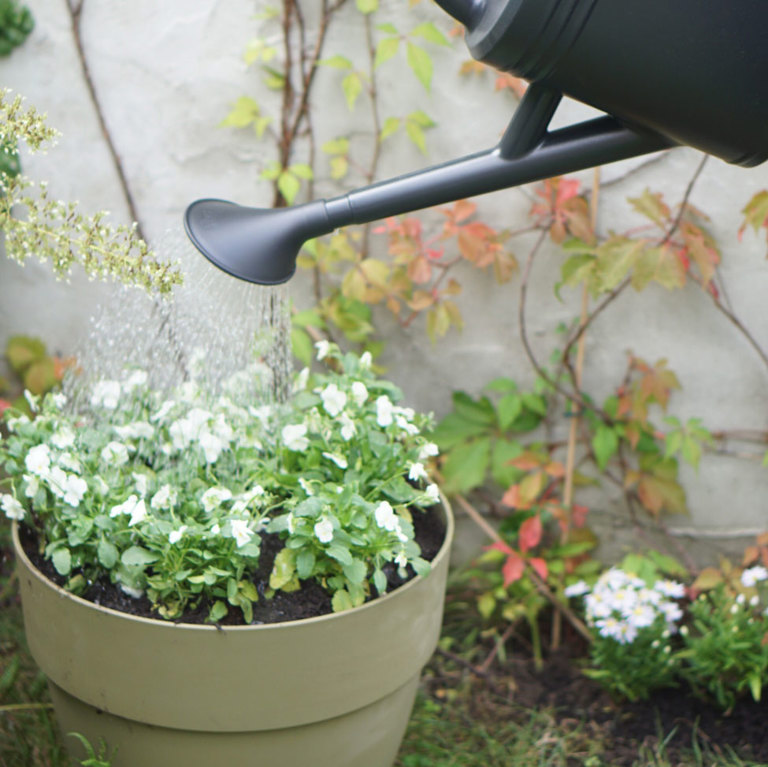
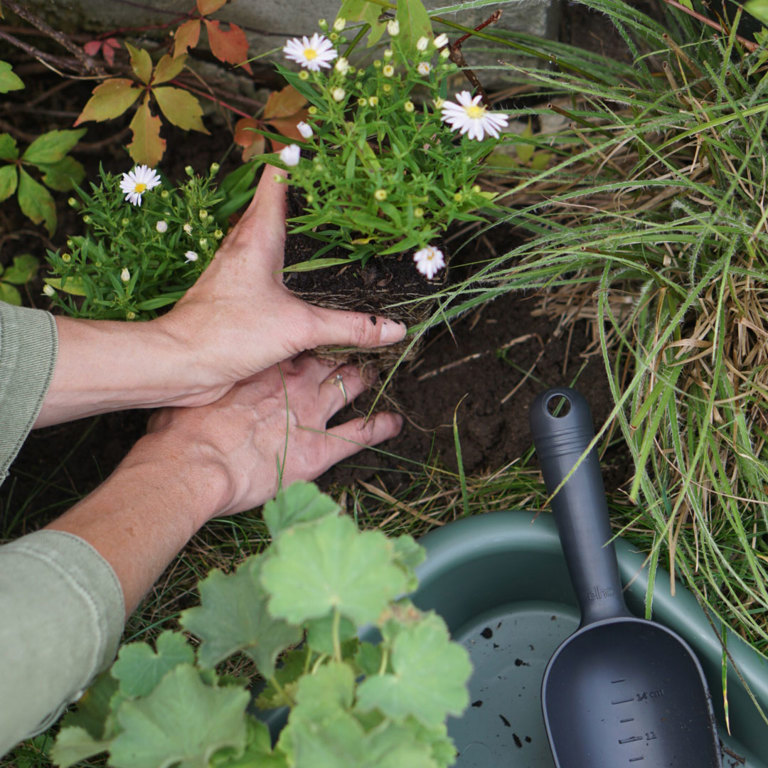
Dividing and splitting
Enhancing growth, refreshing borders, or keeping growth in check—dividing, splitting, or tearing plants has many advantages. The majority of perennial plants are suitable for division. Almost all clump-forming perennials, ground covers, and ornamental grasses benefit from division. These plants grow outward from the centre and can be divided into pieces, each forming a beautiful new plant. Do not divide plants that are in bloom, in full bud, or have a woody base, such as lavender, for example. Lavender is essentially a small shrub and cannot be propagated by division. Tip: divide plants of the same species all at once to keep track of which plants in your beds need attention. Here's how:
- Trim faded stems and dead leaves, then dig up the root ball, leaving the roots intact.
- Shake loose soil from the root ball. Remove the oldest parts from the centre of the plant; these are depleted but still suitable for compost.
- Use a sharp spade to divide the plant into the desired quantity.
- Collect the plants on a garden tray and place them back in the border. Dig a roomy planting hole for each new plant using a shovel.
- Use your watering can to give each plant a generous amount of water.
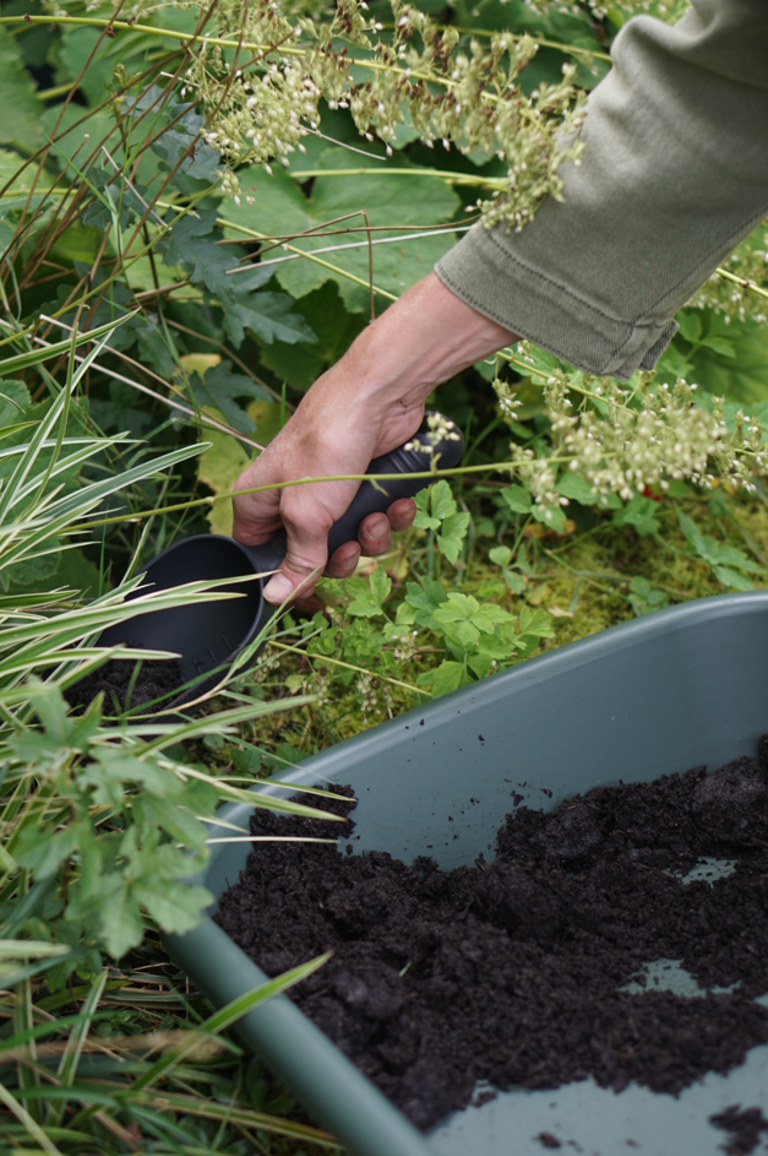
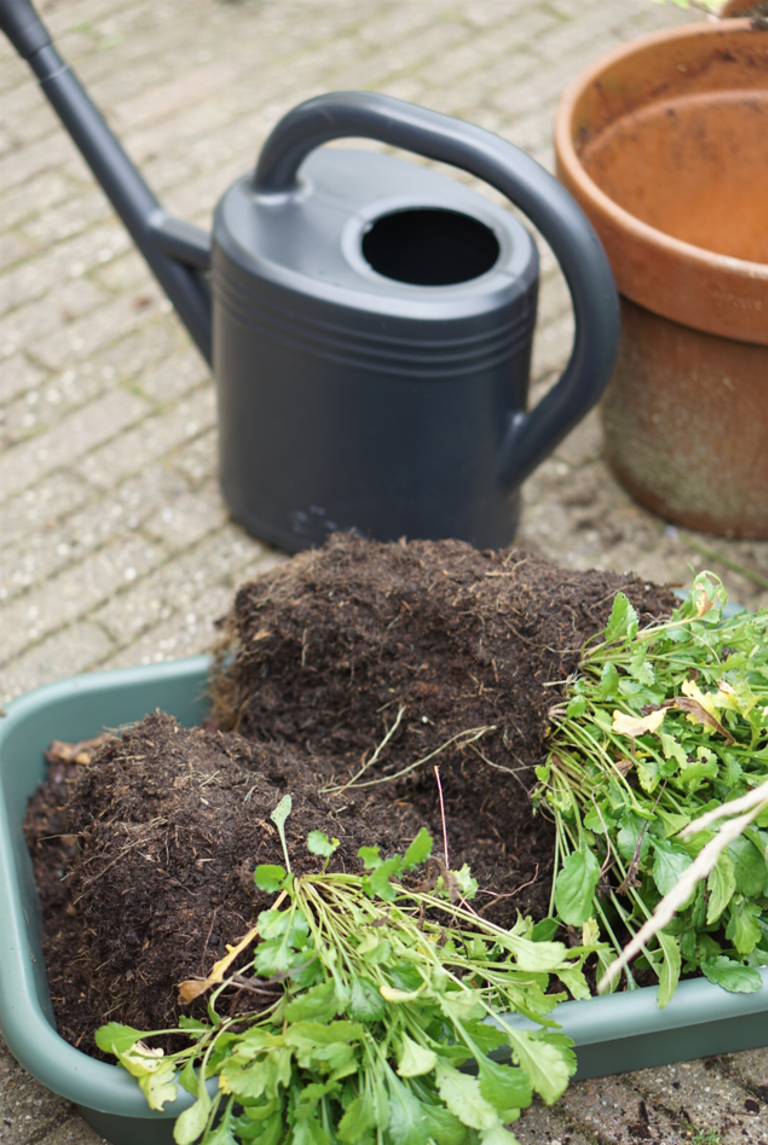
Adding new plants
Ideally, you want something blooming in your garden every season. Flowers that bloom at different times keep your beds continually interesting. Summer is the most vibrant season in the garden, but what happens in the autumn, winter, and spring? So, in the fall, fill your garden with plants that contribute to the overall beauty year-round. here are three favourites for each season:
Autumn:
- Knotweed (Persicaria amplexicaulis)
- Anemone 'Wild Swan'
- Aster 'Twilight'
Winter:
- Winter Honeysuckle (Lonicera fragrantissima)
- Christmas Rose (Helleborus niger)
- Hemp-agrimony (Eupatorium cannabinum)
Spring:
- Foamflower (Tiarella 'Pink Skyrocket')
- Oxlip (Primula elatior)
- Daffodil 'Bridal Crown'
Summer:
- Knotweed (Persicaria amplexicaulis 'Rosea')
- Astilbe 'Peach Blossom'
- Garden Phlox 'Blue Evening'
Visit a nursery and plant the new additions at the recommended spacing in the ground. It's tempting to plant them close together for a fuller look, but each plant needs its space to grow. Remove the plants from the nursery containers and place them on a garden tray. Walk around the garden and distribute the plants in your beds. Use your watering can to water the plants after planting.
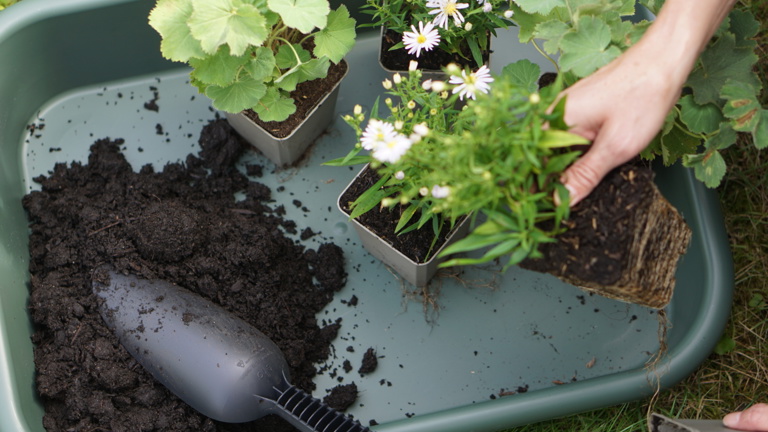
Sowing in autumn for earlier blooms
In the world of seeds, there are warm germinators and cold germinators. Cold germinators prefer low temperatures, while warm germinators have a hard time sprouting in the cold. Two-year flowers and perennial plants generally benefit from a warm start, which is why sowing in the fall is advantageous. With the green basics growpot and grow house, you can germinate seeds effectively and protect them from the cold later in the year. Place them in a spot at around 18 degrees Celsius in the winter or in a greenhouse (without the grow house) and plant them in the spring. Flowers will bloom earlier if you sow in the fall!
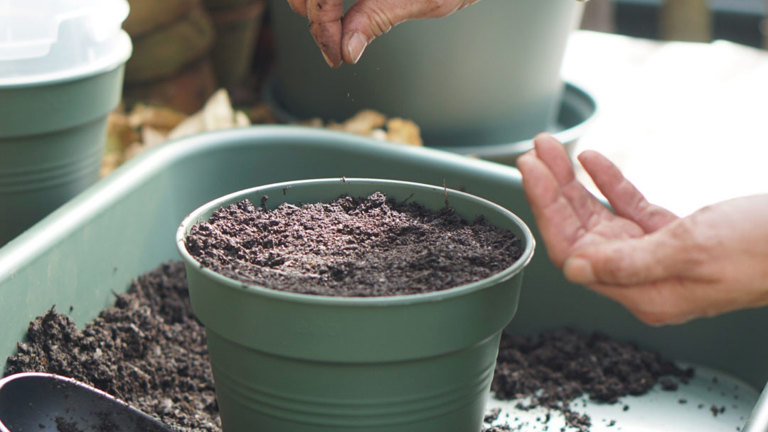
Planting bulbs in autumn
If you want to enjoy cheerful spring flowers, it's essential to plant flower bulbs in the fall, preferably before December, so the bulbs have time to establish roots. Plant bulbs in groups of five or more, or create a bulb lasagna in a vibia campana pot. The different layers of bulbs will bloom alternately, allowing you to enjoy a display of flowers from February to May. Well worth it, right? If you need bulb inspiration, check out shop.studiomayandjune.com.
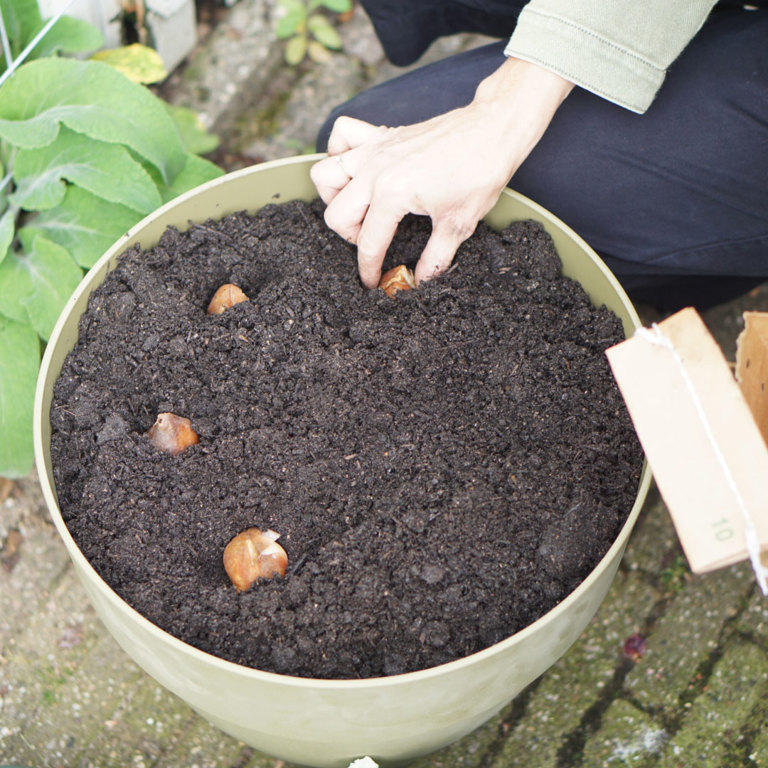
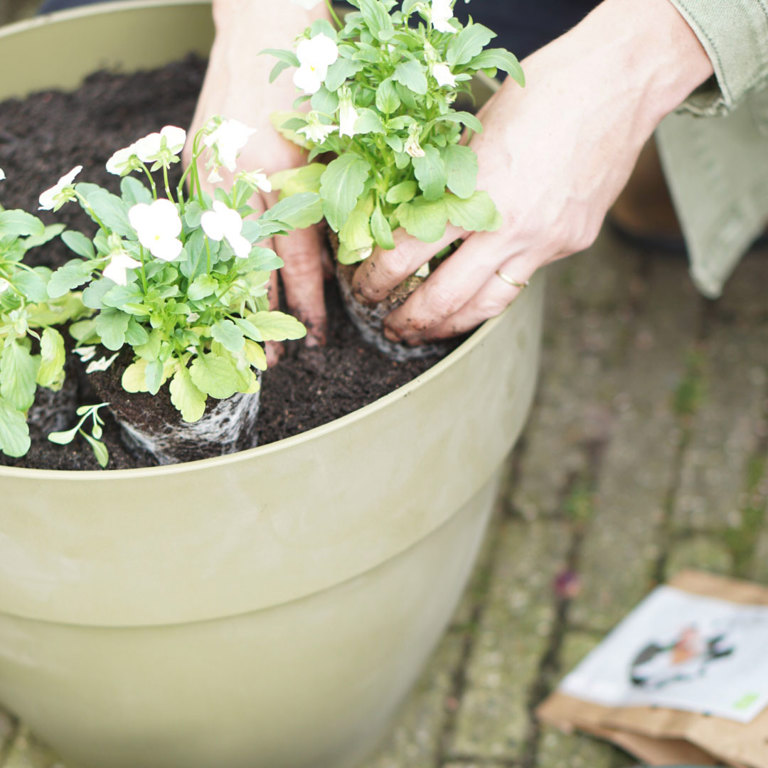
Feed your garden
After a summer where nature gave its all, the soil could use some nourishment in the fall. Therefore, add a layer of organic compost to your borders and pots in the autumn, about 3-5 centimetres thick. Grab your garden tray and generously spread the compost throughout the garden with a scoop. The soil can rest during the winter and provide a bountiful blooming garden in the new year. Did you know that a layer of leaves is also essential? It provides warmth to the soil and offers insects and other animals a place to hibernate. The leaves decompose slowly, providing free compost!
In a nutshell, there's always something to do in the garden, and perhaps autumn is the most rewarding time to get to work. If you nurture and fill your garden in the fall, you'll be grateful for the lush greenery and spring flowers that emerge after a bare winter.
Best of luck!
Judith
Studio May & June
About Judith
"Since 2019, I've been designing gardens out of a love for greenery and flowers – I wanted to surround myself with as much of it as possible. May & June quickly became more than just a garden design studio because I find many things interesting. The desire to work with flowers led to workshops, e-books, and later a garden design masterclass. Then, a team of ecological garden designers took care of the design part, and I started an online shop with our own seed line, flower bulbs, books, and our own garden magazine."